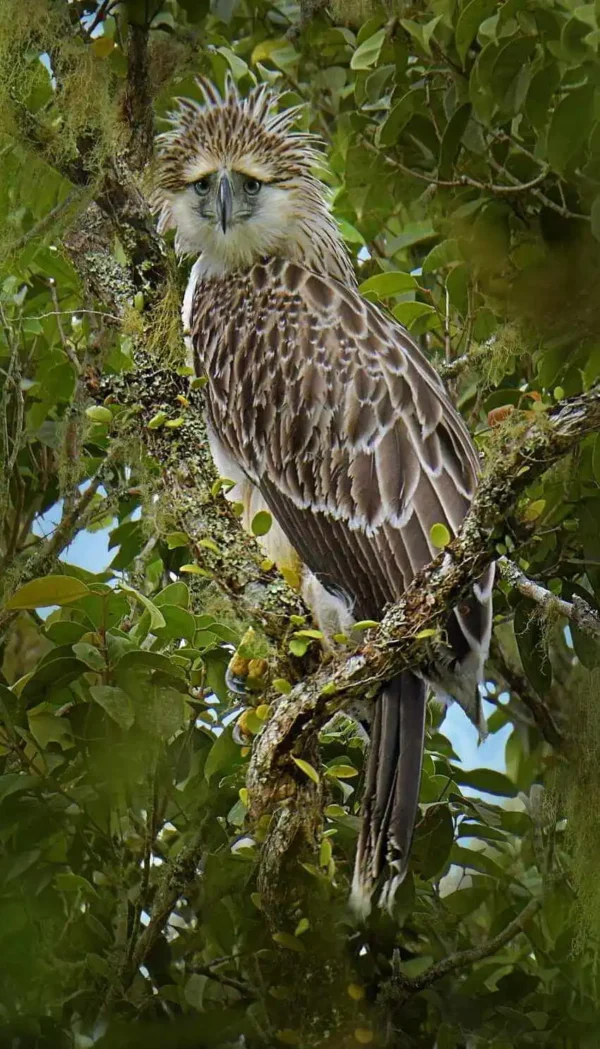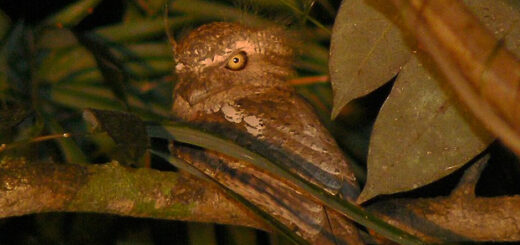Philippine Eagle – Majestic and Endangered

Flying above the clouds, hovering the majestic view of the pearl of the east with my wingspan of 7 feet, I am the Philippine Eagle, the most dominant hunter in the Philippine forests.
The Philippine Eagle is one of the world’s largest, most powerful birds of prey. It is considered the largest of the extant eagles in terms of length and wing surface area, with only Steller’s sea eagle and the Harpy eagle being larger in terms of weight and bulk.
It was formerly known as the Monkey-eating Eagle, as reports from natives told that the raptor preyed exclusively on monkeys. This was later found to be incorrect as more recent studies have revealed the species to prey on a variety of animals ranging from rodents and bats to pigs and monitor lizards. They are monogamous and mate for life, unless one of the pair dies, and they have a long breeding cycle that lasts for two years with the male and female sharing parental care for a total of 20 months.
A Giant of the Skies
Endemic to the Philippines, this magnificent raptor can only be found on a few islands, primarily Luzon, Leyte, Samar, and Mindanao. Adult Philippine Eagles can grow over 3 feet (1 meter) tall with a wingspan that can stretch up to 7 feet (2.1 meters). Despite its size, the eagle is a masterful flyer, soaring high above the forest canopy in search of prey.
Interestingly, it was once called the “Monkey-eating Eagle” due to early observations of its diet. However, later studies revealed a more diverse menu, including flying lemurs, snakes, monitor lizards, and even large birds. The eagle sits atop the food chain in its habitat, playing a critical role in maintaining ecological balance.
A Life of Loyalty
The Philippine Eagle is known for its strong pair bonds and monogamous nature. Mated pairs often stay together for life, sharing responsibilities such as building massive nests high in the treetops and raising a single chick every two years. The slow reproductive rate of the eagle makes each life even more precious, especially in the face of extinction.
On the Brink
Sadly, the Philippine Eagle is critically endangered. Fewer than 400 pairs are believed to remain in the wild. The main threats to their survival are deforestation, hunting, and habitat fragmentation. As the forests of the Philippines are cleared for agriculture, logging, and development, these majestic birds lose not just their homes—but also their food sources and breeding grounds.
Efforts to save the Philippine Eagle are ongoing. The Philippine Eagle Foundation, based in Davao City, leads captive breeding programs, habitat protection, and public awareness campaigns. With the help of local communities, conservationists are working tirelessly to protect this national treasure.
Why It Matters
The fate of the Philippine Eagle is closely tied to the health of the forests it inhabits. Protecting this bird means preserving entire ecosystems that benefit thousands of other plant and animal species, many of which are also found nowhere else on Earth. Saving the eagle isn’t just about preserving a species—it’s about safeguarding a part of the planet’s natural heritage.
The Philippine Eagle is more than just a bird
It is a powerful emblem of Filipino pride, resilience, and responsibility. Whether you’re a wildlife lover, a traveler to the Philippines, or someone passionate about nature, the story of the Philippine Eagle is one that calls for attention, admiration, and action.
Let’s not allow the skies of the Philippines to fall silent. Together, we can help the king of the Philippine forest soar again.
References:
https://en.wikipedia.org/wiki/Philippine_eagle










